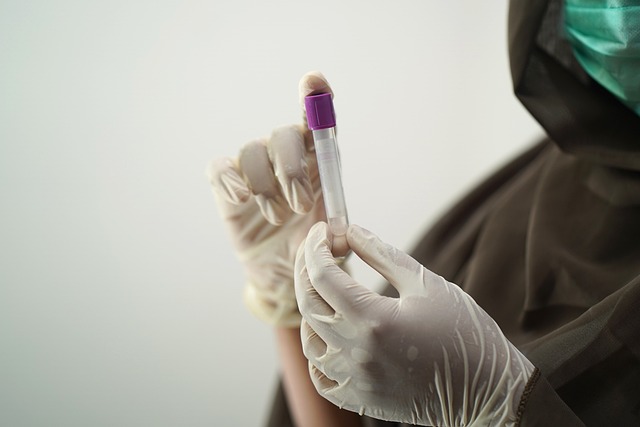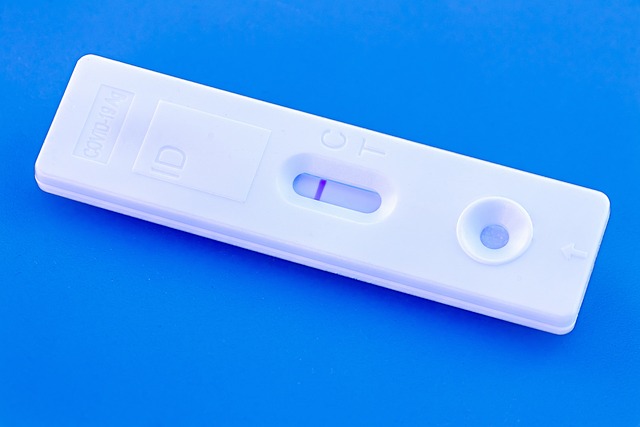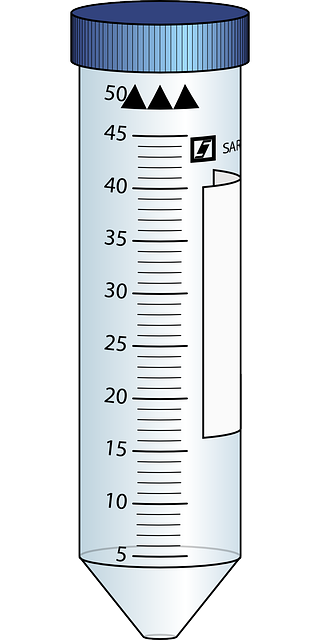The UK's healthcare system utilizes advanced thyroid blood testing as a key diagnostic tool for iron deficiency anemia (IDA), which is prevalent and characterized by low iron levels and reduced red blood cells. These sophisticated tests, such as serum ferritin, transferrin saturation, C-reactive protein measurements, and thyroid function analysis (including TSH and free thyroid hormone levels), offer a detailed evaluation of iron status and inflammation, allowing for precise differentiation between types of anemia. The National Health Service (NHS) advocates these tests as the first line of diagnosis to ensure accurate diagnoses and tailored treatment plans that improve patient outcomes. These personalized approaches are crucial in managing both IDA and associated thyroid conditions, with Advanced Thyroid Blood Test UK playing a significant role in this process by providing comprehensive insights into iron metabolism and thyroid function interactions, ultimately leading to better health management and outcomes.
blood tests play a pivotal role in diagnosing iron deficiency anemia, with advanced thyroid blood testing offering precise insights into iron metabolism, particularly within the UK’s healthcare framework. This article delves into the nuances of iron deficiency anemia detection through blood analysis, guiding readers through the diagnostic process and highlighting the importance of comprehensive blood tests in accurate diagnosis and management. Understanding the intricacies of thyroid function and its relationship with iron levels is essential for both medical professionals and patients alike.
- Decoding Iron Deficiency Anemia: The Role of Comprehensive Blood Tests in Diagnosis
- Understanding Advanced Thyroid Blood Testing: A UK Perspective on Iron Metabolism
- Step-by-Step Guide to Iron Deficiency Anemia Testing through Blood Analysis in the UK
Decoding Iron Deficiency Anemia: The Role of Comprehensive Blood Tests in Diagnosis

Iron deficiency anemia is a prevalent condition characterized by insufficient iron levels, leading to an inadequate number of healthy red blood cells. Accurate diagnosis is pivotal for effective treatment and management. In the UK, advanced thyroid blood tests play a crucial role in decoding iron deficiency anemia. These comprehensive tests go beyond basic screening by measuring various components of the blood, including serum ferritin, which reflects the body’s iron stores, transferrin saturation, which indicates how well the body is using iron, and C-reactive protein, which can affect ferritin levels due to inflammation. These detailed assessments are integral in distinguishing between anemia of iron deficiency and anemia of inflammation, ensuring a precise diagnosis. Additionally, complete blood count (CBC) and erythrocyte indices help quantify the size and number of red blood cells, providing a clearer picture of the anemia’s severity and type. By utilizing these advanced thyroid blood tests in the UK, healthcare professionals can tailor treatment plans to individual patient needs, optimizing outcomes and improving overall well-being. Patients with suspected iron deficiency anemia should consult their GP or a specialist for appropriate testing, which is essential for confirming the diagnosis and guiding therapy effectively.
Understanding Advanced Thyroid Blood Testing: A UK Perspective on Iron Metabolism

In the UK, advanced thyroid blood testing has become a cornerstone in diagnosing and managing iron deficiency anemia, with a focus on precision and accuracy. These tests go beyond basic hemoglobin or hematocrit measurements to offer a comprehensive understanding of iron metabolism. Key among these is the assessment of serum ferritin levels, which serve as an indicator of body iron stores, and transferrin saturation, which reflects the availability of iron for red blood cell production. Additionally, thyroid-stimulating hormone (TSH) and free thyroid hormone (T3/T4) levels are evaluated to rule out any concurrent thyroid dysfunction that may complicate iron metabolism. This holistic approach ensures a nuanced understanding of the patient’s condition, allowing for tailored treatment plans that address both iron deficiency and any associated thyroid issues.
The UK’s National Health Service (NHS) has established guidelines that recommend advanced thyroid blood testing as a first-line diagnostic tool when iron deficiency anemia is suspected. This approach not only aids in early detection but also minimizes the need for repeated venepunctures, which can be invasive and uncomfortable for patients. The integration of these tests into clinical practice has been instrumental in improving patient outcomes by enabling healthcare professionals to make informed decisions based on detailed biochemical information. Advanced thyroid blood testing is thus a vital component in the UK’s approach to managing iron deficiency anemia, offering a clear perspective on iron metabolism and its interplay with thyroid function.
Step-by-Step Guide to Iron Deficiency Anemia Testing through Blood Analysis in the UK

In the UK, diagnosing iron deficiency anemia begins with a blood test, which is the most reliable method for assessing iron levels and detecting anemia. The first step involves a complete blood count (CBC), where the quantity of haemoglobin, red blood cells, and hemoglobin in the blood is measured. If abnormalities are detected, further tests are conducted to evaluate iron status specifically. One such test is the ferritin test, which measures the amount of ferritin—a protein that stores iron—in the blood. Elevated levels of ferritin can indicate iron stores within the body, while low levels suggest depletion and may point towards iron deficiency anemia.
Should the ferritin levels be low, a healthcare provider might order additional tests to confirm the diagnosis. This includes the total iron-binding capacity (TIBC) test, which measures the blood’s ability to bind and transport iron, and the serum iron test, which assesses the amount of iron not bound to proteins. Another critical test is the advanced thyroid blood test UK, which can be particularly important as thyroid dysfunction can either mask or exacerbate iron deficiency anemia. This comprehensive approach ensures that any underlying thyroid issues are identified and addressed alongside the anemia, optimizing treatment outcomes. Healthcare professionals use these results in conjunction with clinical findings to make an informed diagnosis of iron deficiency anemia, guiding tailored treatment plans for patients in the UK.
In concluding our exploration of iron deficiency anemia, it is clear that advanced thyroid blood tests play a pivotal role in its accurate diagnosis and management. The UK’s healthcare approach to this common condition has been detailed through comprehensive coverage of the testing process, emphasizing the importance of these assessments for maintaining health. By outlining the steps involved in iron deficiency anemia testing through blood analysis and delving into the nuances of advanced thyroid blood test interpretation specific to the UK context, patients and practitioners alike are now better equipped to navigate this aspect of health care. The integration of these tests into clinical practice is not just a scientific imperative but also a step towards enhancing overall patient well-being.
